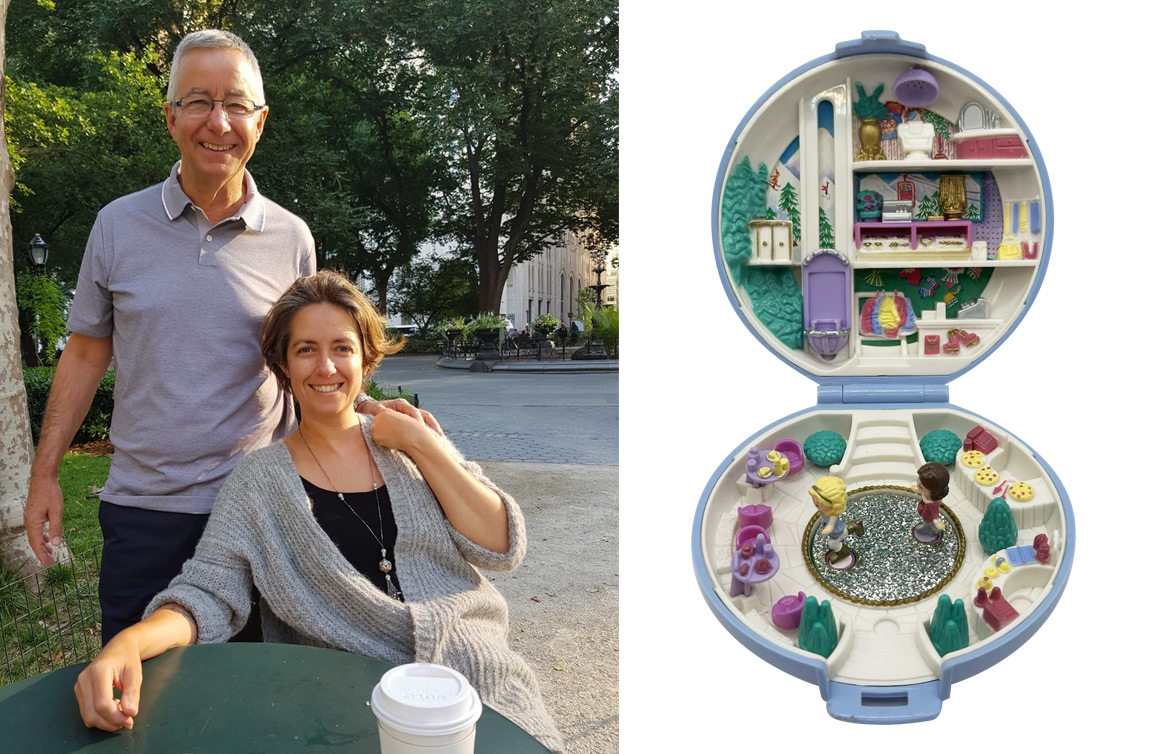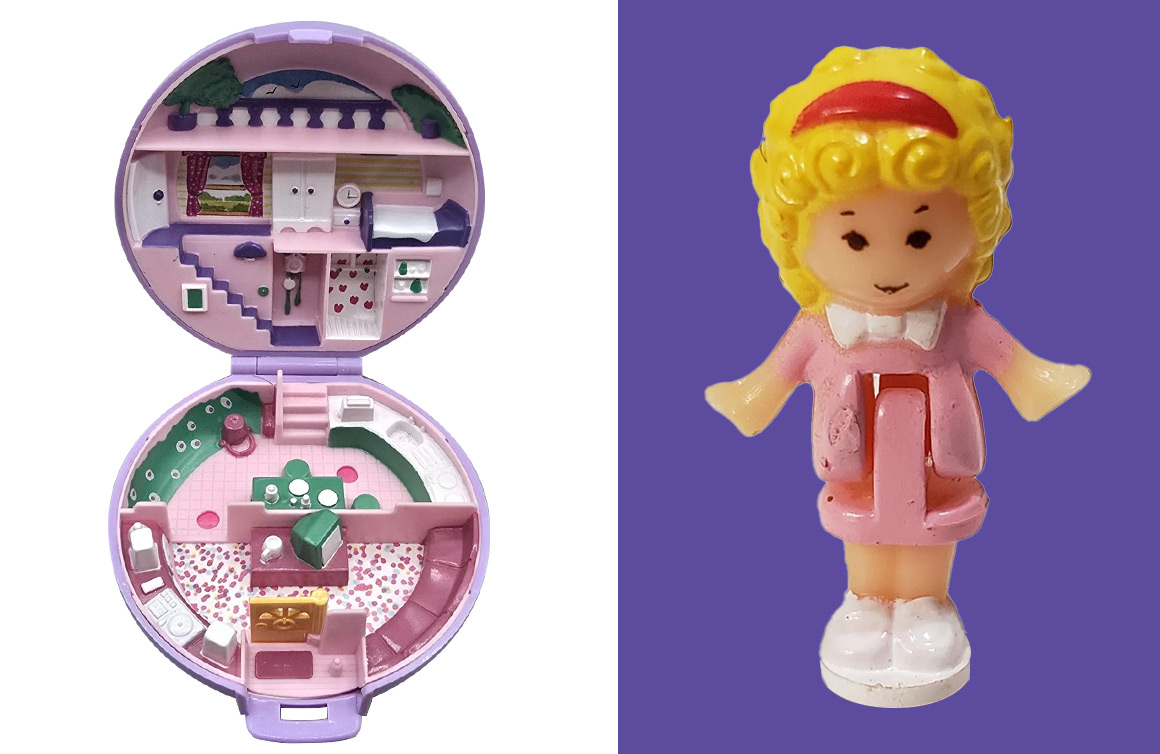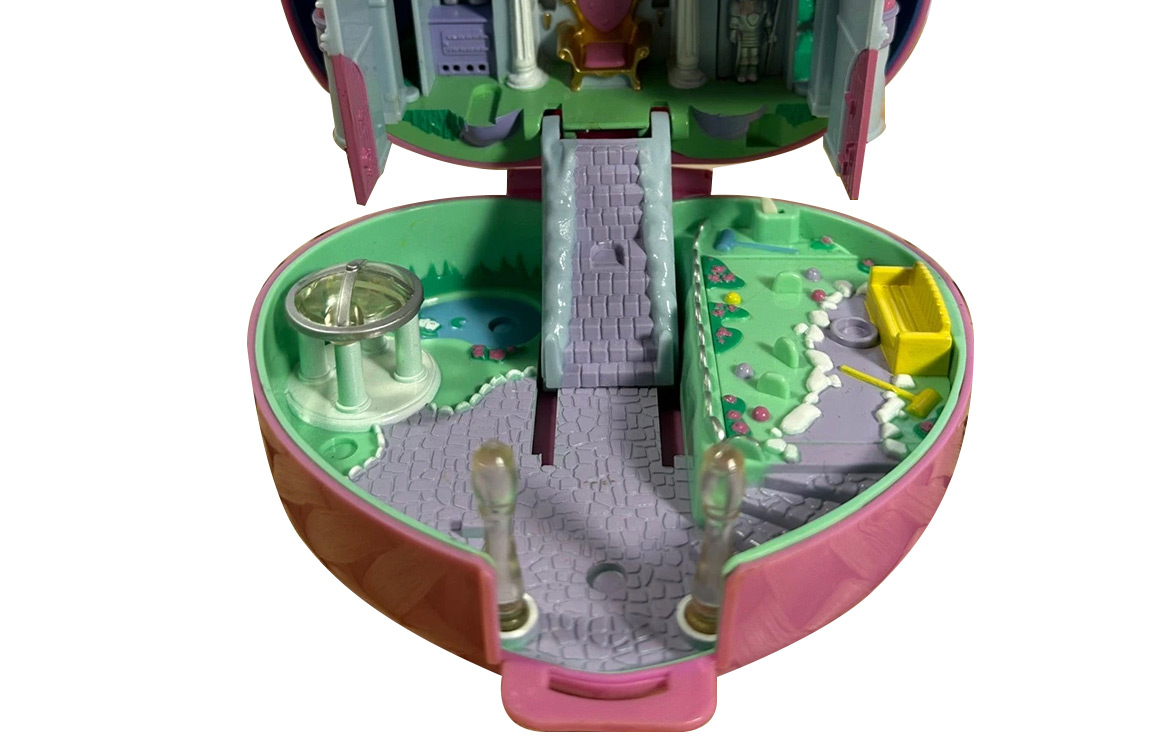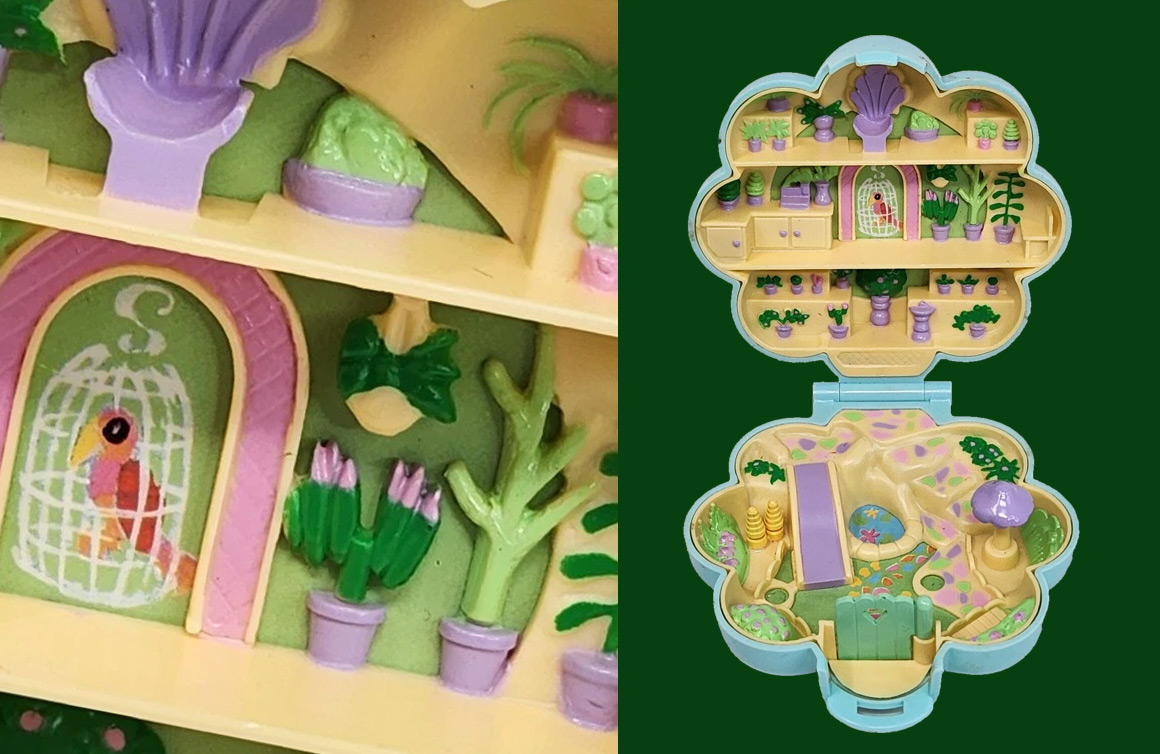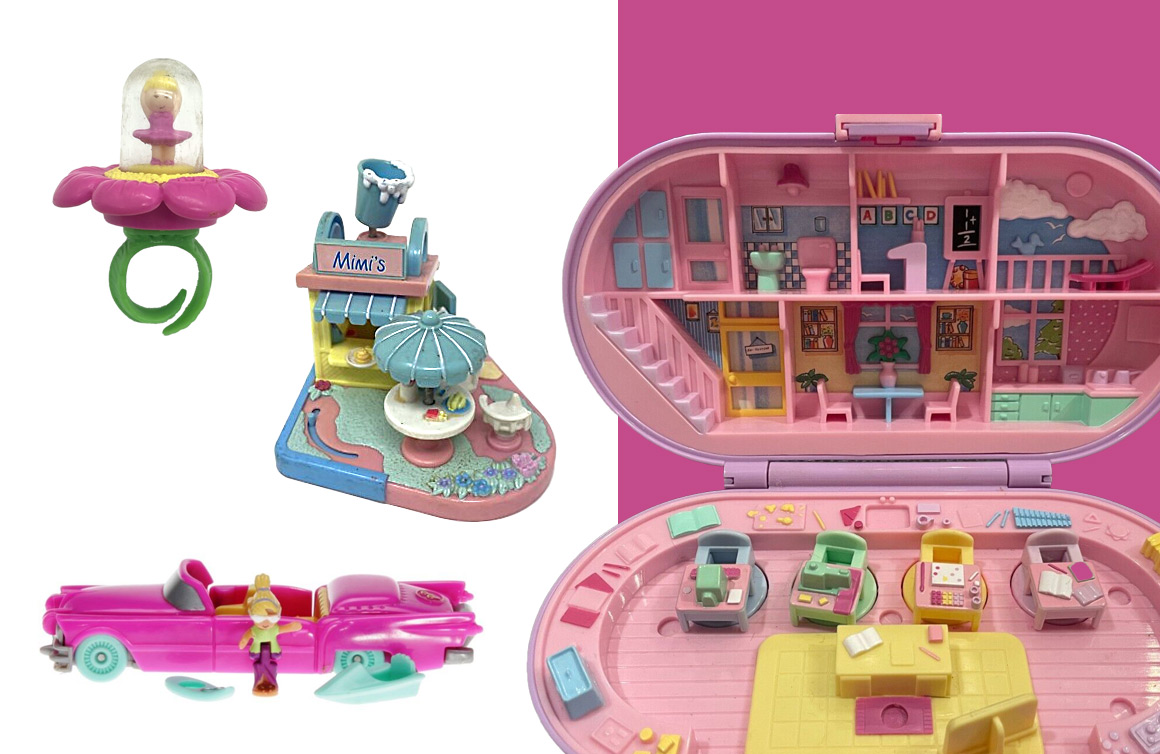Tell us about your dad’s background in design.
Dad left school with no qualifications at the young age of 15 or 16, as early as you were allowed to in those days.
He found his way to engineering apprenticeships as a teenager. From an early age, he was building things; he loved that. There weren’t many toys in his childhood, but he did have access to Meccano, and a radio club allowed him to experiment with circuit boards and wires, learning about frequencies and other related concepts. That was an obsession for him throughout his entire life. He used to say that the apprenticeship saved his life. He found very positive, strong male role models in that area. He would tell very vivid stories about these men as if it had just been a few weeks ago. For Dad, this was one of the first places where he felt safe. The love of these things already existed and just kind of exploded. He worked for a lift company called Pye here in England, as well as at a couple of other locations, performing various types of engineering.
At a certain point, he decided that if he was really going to start his own business — which was always kind of the only option for him because he said he’d make a terrible employee — he needed some sort of academic something behind him. So, he went to the Central School of St Martin’s around 1975 and studied industrial engineering. Obviously, that wouldn’t be possible today without qualifications, but back then, it was a different matter. He walked in with tremendous confidence, as Dad was known to do, and told them that he needed to study there, they needed him as a student, he had things to do, and they could support each other. The school asked where he would go if they didn’t accept him. He said that he wasn’t applying anywhere else, so it was all on them. He was quite a strong personality, you could say.
That’s where he met his business partner, Chris Taylor, with whom he worked until Dad retired. They had a couple of industrial products, such as a vacuum forming machine that Dad designed and was either sold through their company or licensed — I’m not sure which. That product was very successful and generated a modest amount of revenue. They were very good at understanding the nuts and bolts of how these industries worked and built contacts through networking.
They had an exciting moment, a fork in the road. They’d been offered a pretty lucrative and long-running contract to design and produce medical supplies. At that point, they had the Ace Case and a couple of other designs that had been somewhat successful in the toy market. They decided that the toys would be more fun and abandoned the medical supply contract to focus on the toys. At this point, it was just my dad, Chris Taylor, and model maker Brian Whitehead — who Dad said was one of the best engineers and model makers he’d ever known — working in the basement of our house in South London.

What do you think inspired him to focus on objects of play and whimsy in his work?
Dad grew up in a place where there was little joy or softness. It was a pretty bleak environment to grow up in, the way he would tell it. I think that at a certain point, what you could call the absence of safety, probably in all sorts of ways, began to direct his choices as a designer and as an adult. That’s my honest answer. It’s not the cheeriest, but it’s the truth.
Personally, when I look at those original compacts, I see someone creating a representation of safety for themselves and other children, driven by a determination that I don’t often see elsewhere. This is the one design where I know the background, so maybe it’s true elsewhere as well, but for me, it was that sense of sanctuary — like being able to disappear into your own world and snap the lid shut on it. It’s a world where you have autonomy and are the master of your own destiny. Yes, everything is beautiful and whimsical, and the detail is there. Dad was obsessed with detail in everything — from the way he made toast to the way he dressed to the way his drawing office was organized. Detail was everything.
It wasn’t that everything was perfectly organized; instead, it was that the details mattered most. He would always say that the truth is in the details. He said it about conversation, too: what are the details that people include? What do they leave out? It was always that the truth is in the details.
I was fortunate enough to travel to Japan and China with My Dad. I think he was working with or preparing to work with Bandai, and they arranged this incredible trip for us. There was a place in a market or park where there were rows and rows of men doing incredibly minuscule paintings on single grains of rice. They used microscopes, eyeglasses, and paintbrushes made from a single strand of hair. It was just unbelievable. Dad already knew about this and wanted us to see it — the craftsmanship. Everywhere we went, he would point out things like a sandwich packet that were well-designed and pleasing.

What were your thoughts as a child when he presented you with the compact that would become Polly Pocket?
I was four years old, and I do remember, as is often the way when something is really important, he wouldn’t necessarily say much. This was one of those examples; he didn’t say much. Looking back, I think it was because he didn’t want to lead me or direct my interaction with the toy. He made it and handed it to me as if it were no big deal.
I remember seeing it for the first time. I’m not sure I had a lot of thoughts, but I remember seeing it and thoroughly understanding what it was, how it worked, and that nothing about it needed explanation. It was so complete. That’s the best word I can think of for it. I then took it away and played with it pretty much relentlessly for six or seven years. It didn’t leave my side during that time. It was only later that Dad found the compact at the bottom of our wooden toy chest and thought to himself, This hasn’t left Kate’s side for several years — I wonder if other children might be interested in this.
Dad always talked about how Torquil Norman of Bluebird Toys, who sadly passed earlier this year, was a real champion of Polly Pocket. He said Polly wouldn’t have reached as many people as she did without Torquil. He often said that in those early days, he wasn’t sure that other people saw the potential. Torquil was an exception; he didn’t need convincing or explanation — he got it immediately. Dad was always grateful to him for that.

How did your dad respond to Polly Pocket’s international success?
It’s funny, because part of me wants to say that he knew its potential and was confident. But I don’t think that’s true.
What he would always say about working as a designer and inventor is that you can’t be overly precious about one particular design. You have to be a kind of conveyor belt, in a sense. You have to be creative, precise, and your heart has to be in everything that you make. And you have to be prolific. He would say if a person spent ten years on one design, it might be beautiful, but it should be the other way around — it should be ten designs a year, not ten years for one.
A design must be sincere, and your heart must be in what you’re designing. You want to see it out in the world. But if you become reverential toward one thing, well, that’s not how the world works.
Now, obviously, Polly became a runaway success. But, did he know that was the case beforehand? He knew she had tremendous potential, and if he could just get others to see it the way he did, it might be possible. He was good at detaching when the moment called for it, but he pushed for Polly. He backed his own vision with her in a way that he didn’t with other projects. Whether that was due to my reaction or something more profound, she was special from the very beginning.
And then there’s always luck — he would say that too.

Polly Pocket has evolved across generations, from compacts to collectibles to an upcoming live-action film. Why do you think the concept continues to connect with audiences?
It’s an excellent question. I suppose you could kind of open it up and ask why dollhouse play of any sort captures our imagination the way it does. You could write a whole thesis on that.
But you’re asking me about why Polly in particular endures. In that case, I think there’s something about the sincerity in Dad’s wish to create this tiny, beautiful, portable space for me — and for all children — to find sanctuary that has been a driving force.
If I’m honest, I don’t totally know the answer to that question, but I know how he felt about it and how intentional he was about anything he made for me. Maybe there’s a bit of me that wants to believe that it’s that energy, that care, that carries it through.
But it was interesting. I think a lot of the tension that came later, as an inventor and creative person, was that you have something that means an enormous amount to you, but you also want it to be in the world. Most artists and designers want that, but there can be a rub there, right? Because suddenly it becomes a big machine of manufacturing and production. I think there was some luck that the purity of his original intention was preserved in the world of Mattel without losing its essence. The original intent stayed alive, which is often not the case with creative, beautiful things once they’re released into the world.
He would be pleased to know that she continues in the same way with Mattel’s Keepsake line. Knowing Dad, he’d get a kick out of how close those new compacts are to his originals — and there may even be a bit of “I told you so.”

Kate invites fans and collectors to share their own cherished Polly Pocket memories in celebration of her father’s legacy. You can also follow Kate on Instagram as she documents more of the history of Polly Pocket.


